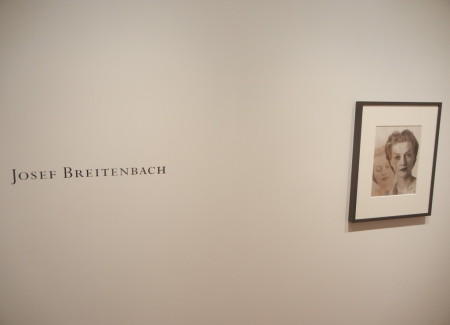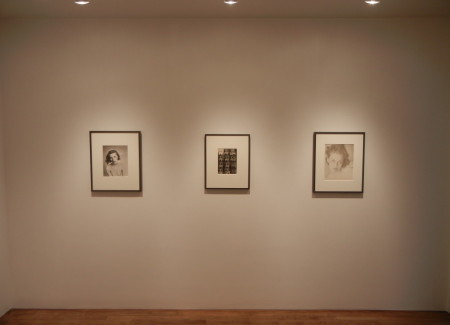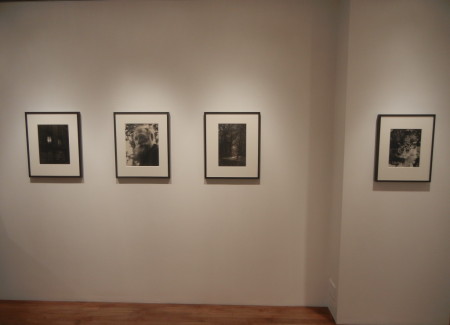JTF (just the facts): A total of 29 black and white photographs, framed in black and matted, and hung against white walls in the l-shaped gallery space. All of the works are vintage/early gelatin silver prints (some with color toning), made between 1930 and 1949. No physical dimensions or edition sizes were provided on the checklist, but most of the prints looked to be in the range of roughly 10×8. (Installation shots below.)
Comments/Context: Trying to get a handle on the relentless experimenters across the history of photography is more complicated than it might appear. Instead of becoming well known for a particular body of work and then spending the rest of their careers contentedly riffing on the same visual themes, the photographic experimenters are always searching for new ways of seeing, trying on new styles and approaches like fleeting fashions, keeping some and discarding others in a constant process of revolution. As a result, they’re often hard to pin down – they stubbornly resist categorization, often fitting into too many boxes in the taxonomy or none at all.
If the work in this show is any indication, Josef Breitenbach was certainly one of these relentless experimenters. Across roughly two decades (from 1930 to 1950), he can be found exploring a diverse variety of looks and techniques. Given certain images from the early 1930s, we might think he was a late Pictorialist or a classic between the wars Modernist; fuzzy textural nature scenes and portraits share the wall with angular, geometric studies of girders, city lightpoles, and straight down Moholy-Nagy style flattened compositions. A few years later, he might better be characterized as a Surrealist, his photographs full of layered multiple exposures, solarizations, stylized faces, and quietly unsettling chemically toned portraits. By the end of the 1940s, he was burrowed deep in his darkroom, making gestural photograms punctuated by colored washes and pigments, seemingly fully aware of the path of Abstract Expressionism. Seeing these later works is like taking on the role of a forensic scientist, trying to piece together how the netting, wire, soap on glass, and hand applied colors were transformed into such elemental abstractions.
In the end, I think Breitenbach finds his originality at the far reaches of his forays into Surrealism and abstraction, where his avant-garde tendencies were allowed to blossom most fully. The show left me wondering about where Breitenbach’s late 1940s abstractions might fit in the specific timeline of Abstract Expressionism, and more broadly, about how we can better understand those artists who refuse to conform to one consistent thumbnail style.
Collector’s POV: The prints in this show are priced between $6500 and $15000, with a number of prints already sold. Breitenbach’s work does find its way into the secondary markets from time to time; recent prices have ranged between $1000 to $22000.












